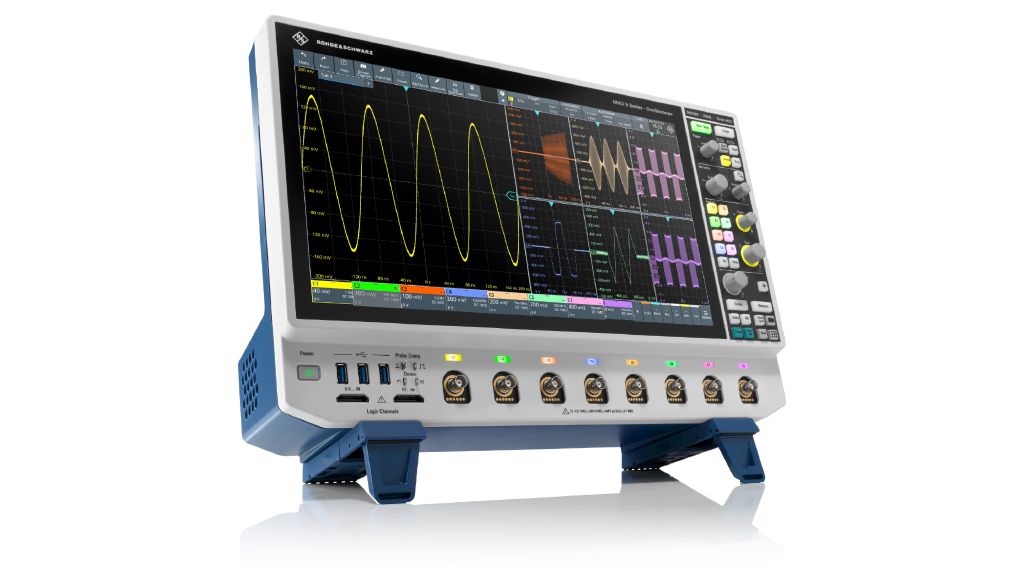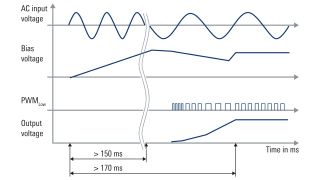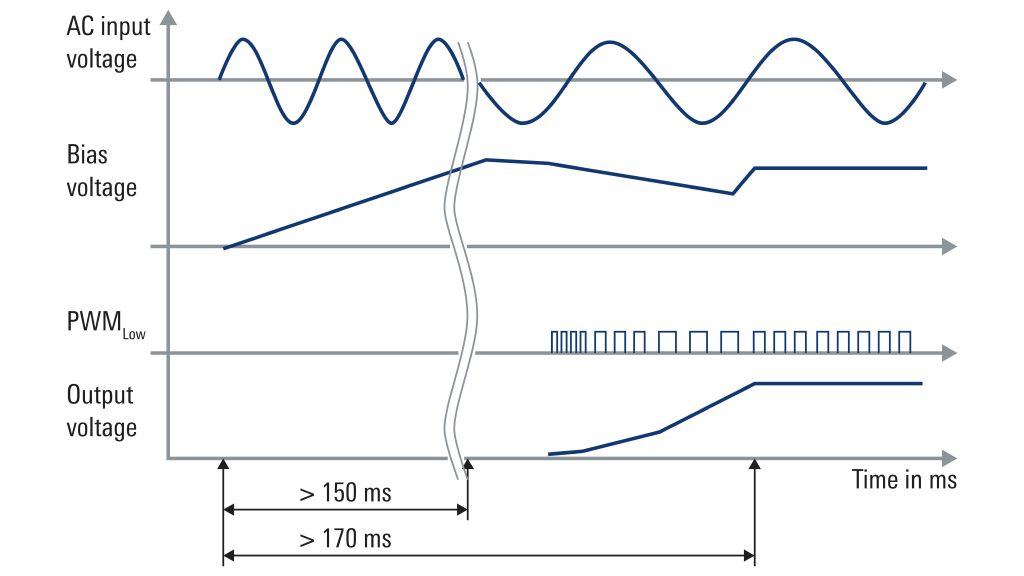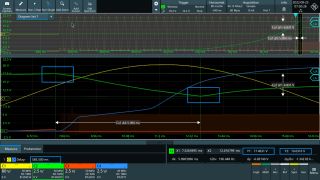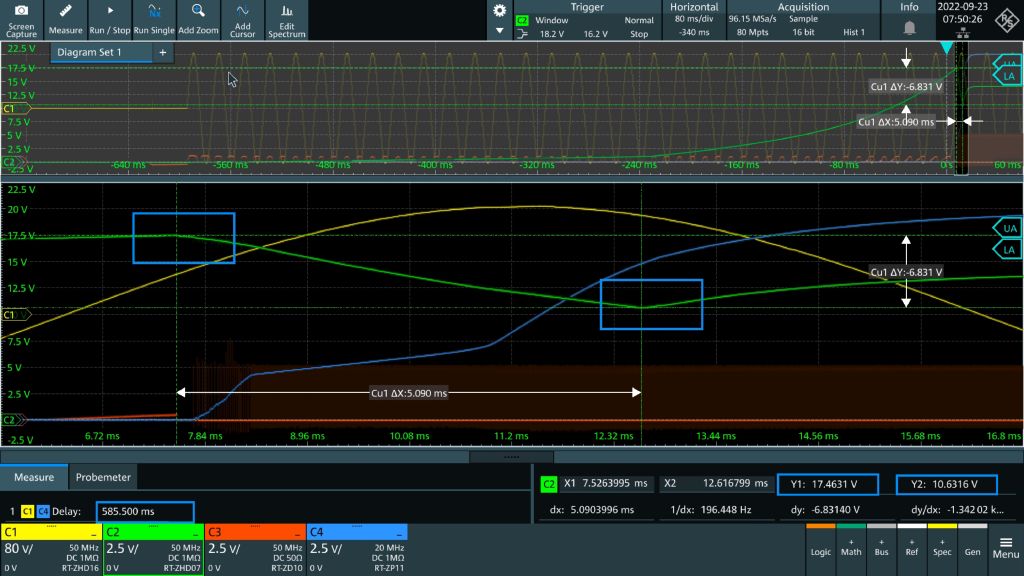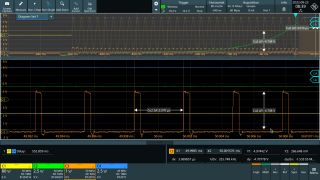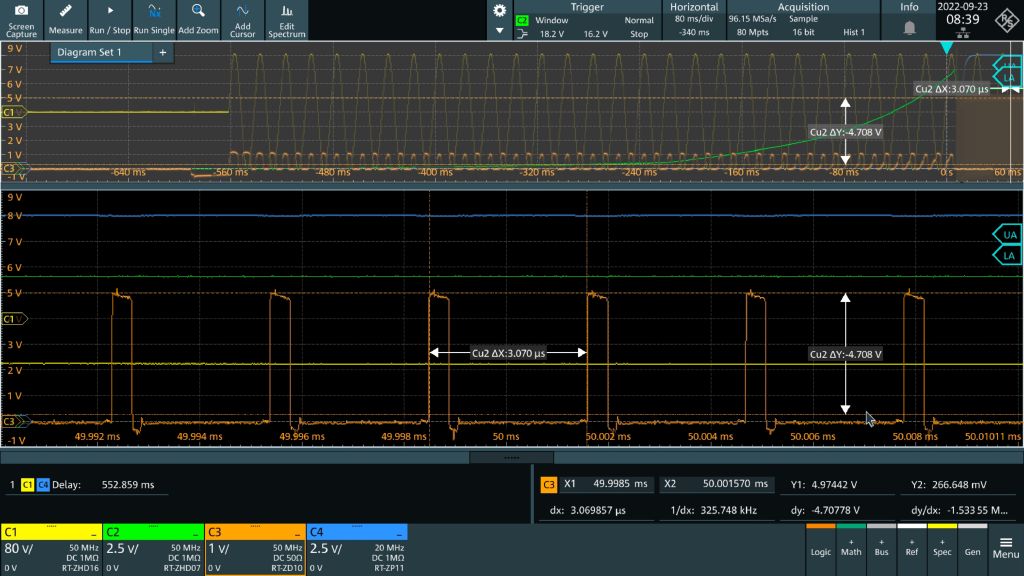Accurate verification of power supply startup sequences for auxiliary bias supplies
An offline AC/DC switching converter has no separate bias power supply that provides power to the control integrated circuit itself. Here, an auxiliary primary winding and discrete components are added to supply power to the control circuit. Verifying this circuitry is essential and requires accurate and detailed signal level and timing measurements. The startup sequence takes a long time, which needs to be taken into consideration in the measurement and requires an instrument with sufficient memory.



